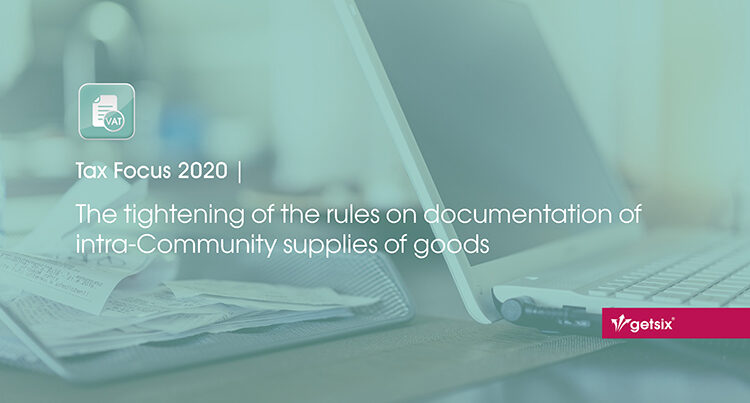The tightening of the rules on documentation of intra-Community supplies of goods
The revision of EU legislation (Council implementing regulation 2018/1912) will bring about some fairly significant changes in the settlement of cross-border transactions from 1st January 2020. One of them is a tightening of the rules on how companies document their intra-Community supplies of goods and apply a 0% rate to these transactions. The new requirements can be found below:
- Required documents:
From 1st January 2020, goods that are subject of an intra-Community supply of goods will be presumed to have been transferred to another EU Member State, if the seller has at least two non-compliant dispatch or transport documents issued by two bodies independent of each other and of the seller.Such evidence may, according to the Regulation, be documents of either category:
- Documents relating to the dispatch or transport of goods:
signed CMR consignment note, a bill of lading, air freight invoice or invoice from the carrier of the goods; - The following documents:
- insurance policy relating to the dispatch or transport of goods or bank documents confirming payment for the dispatch or transport of goods;
- official documents issued by a public authority, such as a notary, certifying the arrival of the goods in the EU Member State destination;
- a receipt issued by the warehouse keeper in the EU Member State of destination certifying that the goods are stored in that EU Member State.
As a rule, the seller should have at least two documents from group A or one from group B. These issues are regulated in detail in the new Article 45a (1) of the Regulation.
- Documents relating to the dispatch or transport of goods:
- Written declaration by the buyer
Where the goods are transported by the buyer or by the third party on behalf of the buyer, the seller should also have a written statement from the buyer confirming that the goods have been dispatched or transported by the buyer or by a third-party on behalf of the buyer and indicating the EU Member State of destination.Such a written declaration by the buyer should be delivered to the seller by the 10th day of the month of delivery and should contain the following:- The date of issue;
- the name and address of the buyer;
- the quantity and nature of the goods;
- the date and place of arrival of the goods;
- In the case of delivery of means of transport, the identification number of the means of transport;
- and the identification of the person who receives the goods on behalf of the buyer.
In view of the importance of the above changes, we recommend that you analyse the transactions carried out and check what documents you receive from your foreign contractors in connection with the deliveries. In many cases, it may turn out that the application of the 0% VAT rate for intra-Community deliveries of goods will be significantly impeded from 1st January 2020.
***





